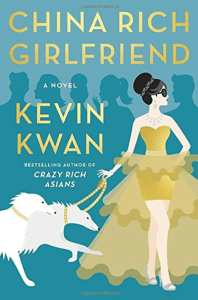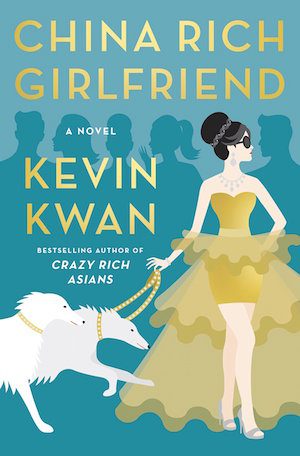
As a young adult occupying people of color spaces in the early 2000s, I read The Karma of Brown Folk, a seminal text by Vijay Prashad; educated myself about rarely taught South Asian American histories; and palled around with fighters and feminists. I understood where waves of South Asians stood in the context of the official American story, and rejected one-dimensional narratives of exceptionalism. The horrific events of the decade—the “elections” of George W. Bush, 9/11, the Iraq War, Hurricane Katrina—further cemented my outsider perspective; my reaction to these events was different from the mainstream white reactions I was observing, and I smugly embraced this binary—of whiteness as the sole oppressor, and of my non-whiteness.
In 2010, my partner and I moved to Singapore, which touts its vibrant and diverse cultural heritage and prides itself on being a good example of multiculturalism at work. I was looking forward to experiencing this diversity of moving away from “white systems.” But, Singapore is 74% ethnically Chinese and I ended up in another supremacist system instead.
Here I am categorized as one of Singapore’s “official” ethnicities or “races”; about 9% of Singaporeans and permanent residents trace their ancestry, wholly or in part, to the Indian subcontinent.
After we moved, I found myself bearing microagressions that were as familiar as the ones I had known from life in the United States, but I was taken aback by the fact that they were uttered word for word by other postcolonial Asians.
“But… where are you really from?” they would ask.
“But… your English is so good!” they would exclaim.
I quickly shed my heritage clothing, the South Asian clothes I frequently wore in my early days of life here, even though it provided me with coverage from Singapore’s equatorial sun, to ward off the inevitable comments. (I had stopped wearing salwaar khameezes in public in the United States when, shortly after 9/11, my father forbade me to.) My experiences thus far had led me think that I would only experience “real” discrimination in majority-white settings, and my education had not prompted me to question this provincial world view. Racism comes with power, not just whiteness.
Recently, a discourse of “Chinese privilege,” a term coined by independent scholar and social justice activist Sangeetha Thanapal and detailed in this conversation between her and Dr. Adeline Koh, associate professor at Richard Stockton College, has emerged. It gives language to the experience of non-Chinese minorities in Singapore, and is applicable in my situation to a certain extent; however, the topic of race continues to be rather taboo given how race, state discourse, and laws governing “communal harmony” are constructed here.
*
None of this is to suggest that white privilege does not exist outside of white-majority countries. It most certainly does. White people sit atop the global hierarchy of race, if there is such a thing, and most are quite oblivious to their position in this hierarchy or the racism that others experience. Time and time again, I’ve met fellow Americans who are utterly confounded when I tell them that everywhere in the world they command a certain deference that I, and other non-whites, don’t.
And when I share my own experiences of discrimination, especially within the American expat community, I am often told that I am being “overly sensitive.” Once, when I argued on Twitter that the term “expat” was reserved for wealthy, white foreigners, I was whitesplained by several Americans, including one self-proclaimed feminist, that, “No, no, no, the dictionary definition of “expatriate” is blahblahblah,” and that in their (white) experience, this surely wasn’t the case, “Thank you for denying my lived experience,” I tweeted, before hitting, “Block. Block. Block.”
*
While Singapore has put me somewhere entirely new in this racial hierarchy, I have also found myself vaunted higher along another axis of privilege. In Singapore, I do not benefit from positive stereotypes about South Asians in the way I do in the United States. There, I am rarely asked, while browsing a clothing rack, “Do you work here?” because I am Asian American; here, I am frequently asked this. However, in Singapore, I benefit from enormous Western privilege.
My US accent and native English language ability nearly guarantees that I will receive better service in restaurants and shops. My US passport assures that I can travel in and out of Changi International Airport with minimal hassle. It makes it likely that my Singapore Permanent Residency application was approved with less scrutiny than my China passport-holding expatriate friends, and that landlords accepted my tenancy application while rejecting potential India passport-holding tenants. My elite US degrees mean my academic and professional qualifications will never be sneered as from a “mill,” or questioned by a prospective employer.
Even within the South Asian community in Singapore, I benefit from being North Indian and fair-skinned. This colorism or shadeism is rooted in the European colonial project, and both Singapore and India were former British colonies.
When a Chinese Singaporean acquaintance made a prejudiced comment about “Indians” in my presence, I called her out. She replied, “Why are you so upset? You are practically ang moh,” a derogatory term for a white person. Such statements, at first, rankled me. How dare you place me in proximity to whiteness? But, she was not incorrect, was she?
*
More recently, I began to think about the ways Westerners, even non-white Westerners like me, are oblivious of their biases within the context of the publication of a rather insipid novel, China Rich Girlfriend, by New York City-based Singaporean writer Kevin Kwan. The book is a sequel to Kwan’s wildly successful debut, Crazy Rich Asians. Both titles detail the madcap, morally questionable, capitalistic high jinks of Asia’s ethnically Chinese moneyed class in Singapore, Hong Kong, China, and beyond.
In the US press, reviewers praised China Rich Girlfriend for its “entirely non-white setting” and its “people of color” cast, conveniently eliding over Singapore literary history, a canon that has often rendered non-Chinese narratives invisible. The book, partly sent in “multicultural” Singapore, features only Chinese protagonists. Characters of other ethnicities and nationalities exist only for, well, color—a driver named Ahmed, two nameless Thai ladies-in-waiting, a Gayatri Singh, the daughter of a maharaja, who warns that her gem-encrusted dagger is “an ancient Hindu relic” in which a “evil spirit is being held captive” and will cast great misfortune onto the firstborn of the person who unleashes it, serving as a Magical Brown Person™ of sorts.
Moreover, whenever the exploits of rich Chinese people are reported for the consumption of Western readers, these accounts are unabashedly Orientalist. It is only the inclusion of Rachel Chu, the Chinese American interloper through whose eyes we view these excesses, that obfuscates this claim to the Western reader. But as I’ve learned, even being an American person of color does not wholly erase one’s American point of view.
I was frustrated as I read these reviews. Here was a book that was far from forward thinking; none of the reviews examined the ways in which it displayed certain prejudices that are reflective of a specific culture and history. Instead it was being lauded by American liberals, both white and non-white, as progressive. But then I asked myself: would I have received the book in the same way years ago, when I was in New York City desperately searching for books to read that featured non-white characters? We Americans erase layers of oppression by foisting our own frameworks, which reflect the specificity of our culture and history, on others. Every non-white person outside the United States is not a “person of color.”
*
As progressive and feminist as I claim to be, I’m embarrassed to admit that I was so naïve it took a transnational move to shift this disturbingly provincial, US-centric point of view. For me to recognize my Western privilege, I had to leave the West.
But, even now as I am more attentive to the ways that systems of power work alongside each other doesn’t mean I still don’t screw up often. It is work to dismantle the neo-imperialistic, exceptionalist claptrap with which we Americans have been indoctrinated. Just the other day, when speaking with Singaporean friends of historical sociopolitical and historical events in Singapore on the eve of a general election, I interjected with some banal observation about American politics. I was summarily called out on my Western-centric points of view and asked to stop centering conversations on American concerns.
I’m grateful that I have the opportunity to think critically about the world, and examine my preconceived notions. I try not to lose sight of the increasing and interconnected struggles of people of color inside and outside the US. And, I’m much less smug now that I’ve learned of a privilege that I was never aware of, but arguably offers me the most benefits. Most importantly, I read differently. Books, even silly ones like China Rich Girlfriend, have always served both as windows to the outside and mirrors of my inside. This essay merely identifies the injustices of those advantages, but does nothing to remove myself from the groups that benefit from them. But this is my starting place, and I will use my knowledge and power in the service of those without, and recruit others to help create meaningful action.





